Fundamentals of GSC for SEO Optimization
Google Search Console (GSC) that offers helpful SEO insights. For instance, you can learn more about:
- problems with indexation on your website
- technological problems
- search engine rankings and insights regarding the operation of your website.
Remember that data is not the entire picture; it is only a snapshot. But if you have the right understanding of the data and know how to apply the necessary changes to your website, together with a solid keyword plan and content production, your website’s search engine visibility may also resemble this:

SEO Plan
Please take note that we worked through GSC in addition to implementing a very thorough SEO plan over a longer period of time in order to accomplish the aforementioned results. Correcting any technical issues that GSC finds is a crucial initial step in this process since without crawling and indexing your website, Google cannot rank it.
Since a Google account is always required to access GSC, access rights must be provided for this specific account. There are various methods for gaining entry or confirming an account. If you are a “verified owner,” your access level will be the highest. This is how it will appear in the settings:
Using Google Search Console to navigate
In GSC, there are two different ways to navigate: the main menu is on the left, while a smaller menu is located in the upper right corner.
To access other apps under your Google account, click the menu shown in the top right corner. Any alerts you received in Google Search Console are displayed. You can view those notifications at the email address linked to your Google account, where they are also issued. There are 45 unread messages in the sample below:
The navigation on the left is what you’ll use the most. Please be aware that depending on some search options that may or may not be activated, this navigation may appear slightly different for different websites. With multiple sub-sections, there are four primary sections:
- Overview
- Index
- Experience
- Enhancements

“Legacy Tools and reports,” “Links,” and “Security & Manual Actions” are the other categories
These are either more sophisticated features or outdated tools that are no longer in use. Manual actions, backlink audits, and disavows shouldn’t be a concern if you are new to SEO or are only now looking into GSC.
An Overview, performance, and URL examination
You can view a preview of the data that is available in your account by clicking on the “Overview.” By selecting “Full Report” from this area, you may also get more in-depth reports.

Performance
You can obtain helpful insights about your website in the Performance area, which includes:
Clicks: The number of times people have clicked from a Google search to your website. (Please be aware that the data won’t reflect what your analytics systems actually show about traffic.)
Impressions: The frequency with which your website surfaced in Google searches (regardless of its ranking)
The click-through rate calculated using clicks and impressions is known as the average CTR.
The Google ranking position is known as the “average position.”
The graph’s timeframe can be altered, and you can even compare two distinct times. Three months are displayed by default. Please be aware that there is usually a small delay in the data that is provided and that the data only goes as far back as your GSC account has been set up.

In order to change the graph’s appearance or disappearance of the line, you may also click on the orange, purple, and blue boxes. The matching data table is displayed beneath the graph.
By selecting a specific URL or keyword to view only the rankings for that area of your website, you can filter the data by clicking the “+ New” button at the top. You can also filter by device or nation.
To import all of this data into Excel, select “Export” in the top right corner.
Search Results, Discover & Google News
The “Performance” portion of some websites might be divided into smaller sections, such as “Search Results,” “Discover,” and “Google News.” In this instance, “Search Results” is the same as what we saw under “Performance” before. If any of the website’s content has ever surfaced in Google Discover, the “Discover” tab is displayed.
If the website has been submitted and accepted for Google News, Google News will show up on this list. In order for content to be eligible for Google News, publishers must proactively apply and adhere to certain tight requirements.
URL Inspection
When you select “URL Inspection” from the left sidebar, the box at the top of the page will be highlighted rather than a new report loading. Just copy and paste this URL into the box and press “enter” to view any URL on your website.
You will then be able to discover whether there were any mistakes and receive data about the crawling and indexing of that specific page. In the example below, the page is functioning properly:

It’s unlikely that a newly released page on your website has been crawled yet. You can click on “REQUEST INDEXING” in this situation, or if you have recently made changes to a page that you haven’t updated in a while. This will queue up the page for Google to crawl, which should happen shortly. This only speeds up the crawler’s progress; it has no bearing on whether or not Google indexes and ranks the page.
Use the “TEST LIVE URL” button in the upper right corner of the page if you think that any technical issues you had with it in the past have been resolved. This button will indicate whether Google can now crawl your page or if there are still issues.
Further details regarding the crawl path and the most recent time Google crawled this specific page may be seen by clicking the arrow on the right side of the “Page is indexed” message. Additionally, this part would include an insight as to why a page would not be indexed. It indicates that it considers this website to be a duplicate of another page, for instance, if it displays another URL as the “Google-selected canonical.”
Index
“Index” is the next part that offers helpful information. Please be aware that each website may have somewhat different sub-items in this menu. The three that you should always view and utilize are “Removals,” “Sitemaps,” and “Pages.”
Pages
You can see a summary of the number of pages on your website that Google has located, crawled, and indexed in the “Pages” section:

The quantity of pages on your website should correspond with the quantity of pages you see here. Should any disparities be observed, it may suggest a problem. Additionally, you should look into this if the graph indicates a decline in the number of indexed pages although you haven’t made any changes to your website.
A list of potential causes for pages not being indexed by Google may be seen beneath this graph. To examine each problem separately, click on any of the problems and download the 1000 or so impacted URLs. Please be aware that only content relevant to your website will be displayed to you. It might be one of the following:
- Blocked by robots.txt
- Page with redirect
- Excluded by ‘noindex’ tag
- Alternative page with proper canonical tag
- Not Found (404)
- Soft 404
- Crawled – currently not indexed
- Discovered – currently not indexed
Please be aware that this list may contain false positives, and it’s possible that some of those problems have already been resolved. There are times when the GSC – Google Search Console indexation issues list is out of date. After resolving these issues, you can ask Google to crawl these pages again by clicking “Validate Fix.”
Final Thoughts:
Google Search Console provides a wealth of insightful information, but remember that it works best when combined with other tools that let you do more in-depth analysis of the results. Additionally, keep in mind that there may be some false positives in GSC; therefore, carefully evaluate the results and take appropriate action to rectify any relevant issues.


